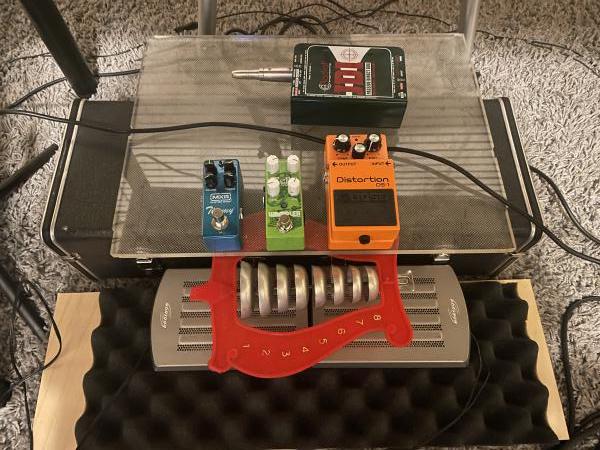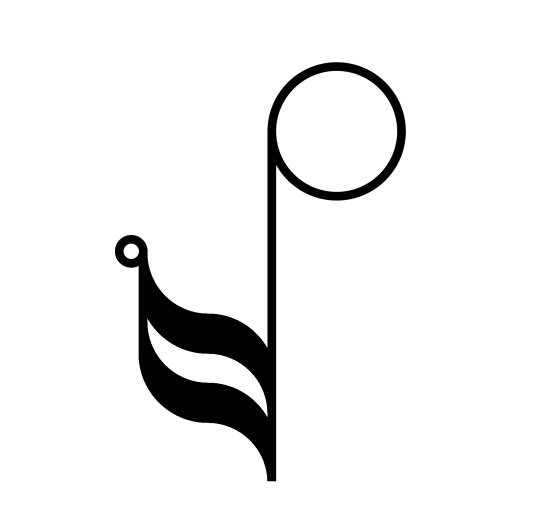Planar Magnetic Saucer Bells
A whole lot of mistakes and a weird premise make for a unique toy mallet library....


ByConner
The story
Hello there again!
This one is a story of mostly failure but fun experimentation. I had these old planar magnetic speakers from yesteryear (yes, not headphones) that I inherited from a sibling. I guess they had come originally as a part of a little 2.1 desktop hifi set or something. Either way I had them tucked away for a while in a drawer, unassuming, perhaps to be later used for a musical project.
Lo and behold, one day after browsing for ribbon microphones for a long time on reverb and eBay a thought clicked in my head. I don’t really remember what that thought was exactly but I basically wanted to try and build my own ribbon microphone. I think I rummaged through a few ideas before I remembered that I had these speakers which used somewhat adjacent technology, and though not ribbons could sound cool in their own right. So I wired them in reverse into my interface and ended up with a pair of really cool-sounding, but very noisy and dark (super low rolloff, even greater than what I’ve typically seen of ribbons), large microphones.
I tried recording just about everything with these, I really could not figure out what task they were well-suited for. At first I thought since they’re so dark maybe they would handle cymbals really well, but all my results were really washy. Then I tried with various wind and percussion instruments to no avail. Finally I landed on the metallophone category, specifically ones where you would have a bright frequency response to tame but where transient information could be comfortably smeared. This category also aided with the big S/N issue, since most of them I had on hand were malleted and decently loud.
I ultimately decided on these tiny toy saucer bells I got at an antiques mall, since in addition to all of the above they were just kind of dinky and fun sounding. So far so good. The actual recording process itself went okay, however a couple more things against my favor settled in:
– The instrument was relatively useless to capture in different dynamic layers as it was difficult to actually get a consistent pitch and volume out of the bells
(they were a bit dinged up and had a million little modal variances)
– The imaging and playing was a very precise endeavor, to try and get consistent feel intra-note and inter-note
– There was a pretty small range, so inevitably once stretched to the keyboard only about one octave would be particularly authentic sounding
I decided to commit to finishing anyway, with a couple oopsies along the way here too. While I was doing some of the really basic universal repair (cutting, fades, de-hum) somewhere along the way I messed up the initial transient strike of a lot of the samples, and got stuck with destructively-edited clicks on the beginning of like almost half the samples. Then after mapping I realized the library was way noisier than I thought, so then had to go back and do a second batch of really particular noise reduction.
I *still* liked the idea enough that I wanted to finish, so I repaired where I could, made the attack a little bit softer, offered some width and noise reduction selection choices (a more pure original setting on the right of the knob, a cleaner and less noisy setting on the left), and packaged with a reverb knob using the IR of a plate reverb I built a while ago to try and sweeten the sound a little bit and offer more versatility. These controls are included in the Kontakt version I’ve provided. For those who wish to duplicate the behavior, the noise reduced and normal samples are mapped identically across each 3 round robin provided. There is just one velocity layer and I’ve provided the impulse of my plate reverb to be used for a separate convolver if wished. I made a quick (and admittedly kind of ugly) UI and have provided images of the setup I used to accomplish this. Out of habit I’ve done a couple silly and bad conventions in the structure of the instrument: I started the project in K5 and accidentally switched to K6 halfway through, meaning now the file is only usable to those in K6+, I also used Bb instead of A# in the naming convention out of habit, ease, and musical “correctness” (really I just wasn’t thinking).
The final product is definitely a really weird collection of haphazard circumstances, but I still like it and think its a bit unique in what it offers, among the many quirks about it. I hope this oddball is fun or useful to anyone who stumbles upon it, and maybe inspires more successful endeavors. I think in the future I might play around more with planar magnetic transducers as a means of recording sound, but I have nothing planned for it at this time. I have acquired a few more other cool things though I’d like to share soon.
Anyways, cheers!
Interface

Reviews
Bells with character -- and noise
These bells have a certain charm to them. They portray child-like innocence and have some poorly tuned overtones so common in children's instruments. It's unfortunate that one must trade off clarity for noise reduction. It would be nicer if better noise reduction had been used so that so much of the high end wouldn't be lost. Better still would have been to use something different to record the bells in the first place. However, as the samplist noted, this is something of an experiment. I can see these bells being used the next time I need to write children's music which is actually fairly frequently. A solid effort here.
Steam punk bells?
These have plenty of "character" to them, which is good in my book, I don't need another vanilla "bells" patch. Part lo-fi, part industrial, I can imagine these in a musical steam punk setting. As for the noise on the samples - I really can't see this being a problem in any real world use case scenario; if it is, just roll off some top end.
Truly immersive lo-fi sound
Definitely not the cleanest of sounds, but something about its character instantly makes me want to write a dark lo-fi beat, I think its quite beautiful in its rawness and simplicity! Best sounding when pitched down an octave imo.
